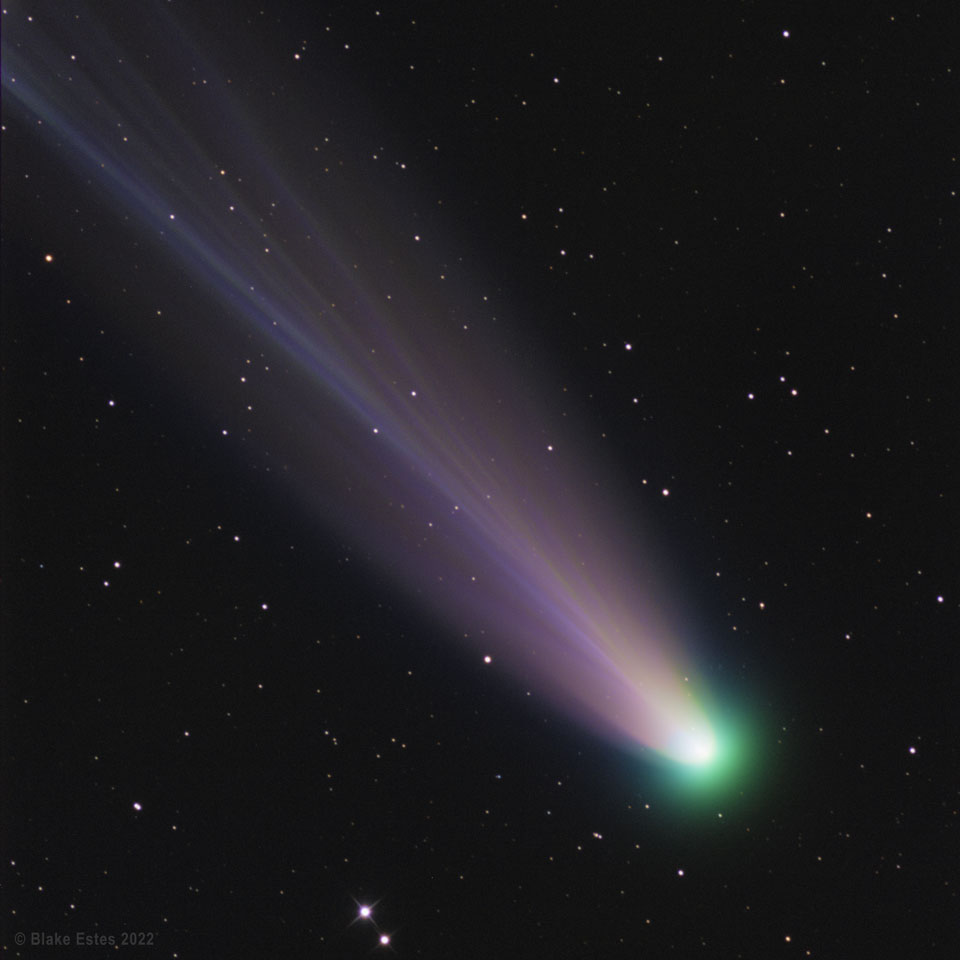안녕하세요, 히제입니다.
오늘 NASA에서 비춰주는 우주의 모습은 어떠할까요?
사진 먼저 감상하시죠!

이 사진의 제목은 Comet Leonard Closeup from Australia 입니다. NASA에서 제공한 공식 설명은 아래와 같습니다.
What does Comet Leonard look like up close? Although we can't go there, imaging the comet's coma and inner tails through a small telescope gives us a good idea. As the name implies, the ion tail is made of ionized gas -- gas energized by ultraviolet light from the Sun and pushed outward by the solar wind. The solar wind is quite structured and sculpted by the Sun's complex and ever changing magnetic field. The effect of the variable solar wind combined with different gas jets venting from the comet's nucleus accounts for the tail's complex structure. Following the wind, structure in Comet Leonard's tail can be seen to move outward from the Sun even alter its wavy appearance over time. The blue color of the ion tail is dominated by recombining carbon monoxide molecules, while the green color of the coma surrounding the head of the comet is created mostly by a slight amount of recombining diatomic carbon molecules. Diatomic carbon is destroyed by sunlight in about 50 hours -- which is why its green glow does not make it far into the ion tail. The featured imagae was taken on January 2 from Siding Spring Observatory in Australia. Comet Leonard, presently best viewed from Earth's Southern Hemisphere, has rounded the Sun and is now headed out of the Solar System.
우주 사진을 볼 때마다, 끝을 알 수 없는 저 광활한 우주 속에서 우리 사람이란 존재가 얼마나 작은 부분인가 실감하게 됩니다.
그럼 저는 내일 또 새로운 우주 사진과 함께 돌아오겠습니다:-) 좋은 하루 되세요!
'우주 사진' 카테고리의 다른 글
| 오늘의 NASA 우주 사진 (2022-01-14) (0) | 2022.01.14 |
|---|---|
| 오늘의 NASA 우주 사진 (2022-01-13) (0) | 2022.01.13 |
| 오늘의 NASA 우주 사진 (2022-01-11) (0) | 2022.01.11 |
| 오늘의 NASA 우주 사진 (2022-01-10) (0) | 2022.01.10 |
| 오늘의 NASA 우주 사진 (2022-01-09) (0) | 2022.01.09 |
댓글